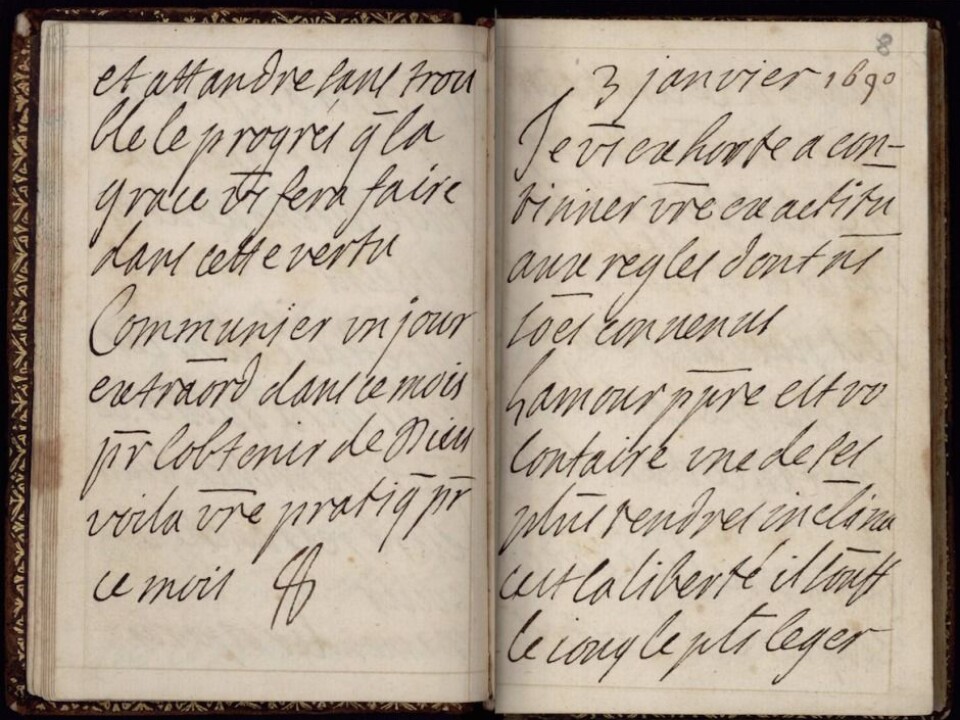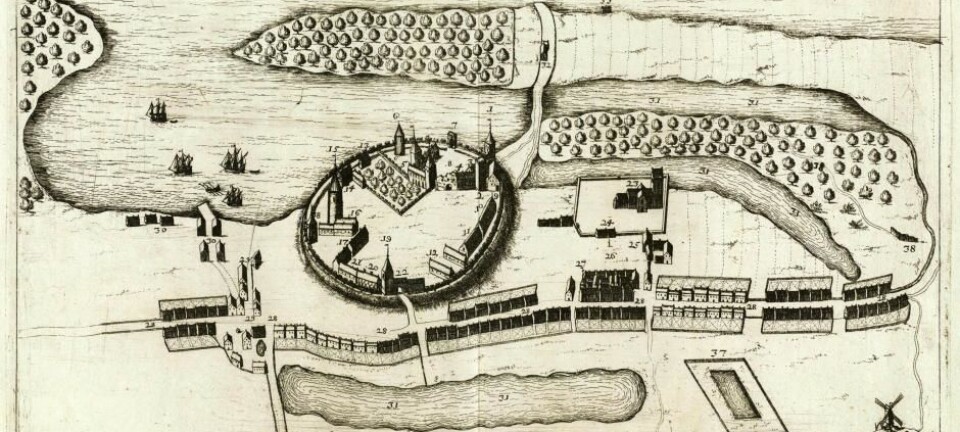
Researchers discover letters written to the Sun King’s wife
Letters written to Louis XIV’s wife give a unique insight into seventeenth century religion, shows a new PhD thesis.
Historians have rediscovered a collection of previously unstudied letters written to the wife of Louis 14th of France.
A little over 300 letters give a unique insight into Madame de Maintenon, and her contemporaries, says church historian Lars Cyril Nørgaard, from the University of Copenhagen, Denmark, who has just completed a Ph.D. on the topic.
“When you’re the first one to read these letters written to Maintenon, the scientific distance in time disappears and you’re just gripped,” says Nørgaard. The letters were copied by Maintenon around the end of the 1600s and provide an insight into her thoughts and worries as a devoutly religious woman with influence over the conflict-ridden king, Louis the 14th.
It is impressive archive work, says Nils Holger Petersen, a lecturer from the Department of Church History at the University of Copenhagen, Denmark, who has examined the thesis.

“It’s an extremely nice treatment of all the nooks and crannies. A really thorough piece of work that give a very deep insight into religious practice at this point in time,” says Patersen.
Read More: A 300-year-old murder could be solved
Letters reveal mysterious phenomena
Some of the letters are in fact edited versions of the letters that the Bishop of Chartres wrote to Madame de Maintenon over a period of 20 years. Maintenon was encouraged by the Bishop to copy and rewrite his letters, and it is these revisions that Nørgaard has now discovered.
“Why on earth would anyone copy the letters and burn the originals? What happened during the rewriting process? I’ve spent a really long time trying to understand this,” says Nørgaard.
“Maintenon was in frequent contact with the bishop, who gave her spiritual guidance and at some point he asks her to copy parts of the letters. Possibly, it’s to take the spiritual guidance closer [to heart]. That’s my thesis in my dissertation,” he says.
In the past, letters had a different level of importance compared to today. The act of copying serves as a reminder of this.
“Letters were both useful objects as well as a means of communication between two people, and therefore people did strange things like rewriting the sender’s words. So it’s difficult to tell how much was originally written by the Bishop and how much was altered or added by Maintenon,” says Nørgaard.
Read More: Documents reveal 2,000-year-old Egyptian youth organisation
The letters were a meditative, religious practice
The letters are arranged into small books or booklets, but are not in chronological order.
“The letters in her small booklets don’t appear to be organised chronologically, but follow the church year. This could possibly be because every letter and guide is adapted to a particular Christian celebration, such as Lent or Easter,” says Nørgaard.
“At the same time we can see that Maintenon changes “they” to “I” in many places. That suggests that it’s a way for her to take the words upon herself. She writes herself according to the Bishop’s instructions. Copying is simply a meditative religious practice, just as monks spent a long time copying passages from the bible.”
Read More: Dead Sea Scrolls still conceal many stories
Maintenon was a Cinderella-like figure
Maintenon is surrounded by fascinating myths--not least because she apparently came from nothing to marry a king, which was unthinkable in the 1600s.
“It’s almost a Cinderella tale and how she went from raising the king’s illegitimate children to marrying him, with no significant [position in society] is a big mystery. We know that she arrived at the palace when the children are officially recognised, and over the years, their relationship changed. We don’t know why the king chose to marry a woman with no rank, because it simply didn’t happen then,” says Nørgaard.
But Maintenon soon became a scapegoat to save the king from embarrassing situations. For example, following the siege of Heidelberg in May 1693, when Louis failed to crush the troops of William of Orange.
The public explanation was that he followed Maintenon’s wishes to return to the safety of Versailles.
“Maintenon became a target of ridicule and you can see that she is fighting this in her letters. It seems that she has partially copied the letters to maintain her religious image in this situation. It’s like a form of mental work-out, where she needs to work hard to maintain a special view of the world and herself,” says Nørgaard.
Read More: Archaeologists develop new technology to read ancient documents
Religion and reality in conflict
The letters are an insight into how people viewed religion at this time, says Petersen.
“The dissertation shows that Maintenon felt a separation between the life she wanted to live and the one that she actually lived, and how she tries to cope with this conflict with the help of religion and the Bishop’s guidance,” he says.
The subject may seem distant to our lives today, but it is important research, says Petersen.
“It can help us to understand why we are where we are today and why our society looks the way it does. This research is an important piece of the puzzle when it comes to the Church’s history. These little pieces give us a more accurate overview of the historical changes in religion,” he says.
-----------------
Read the full story in Danish on Videnskab.dk
Translated by: Catherine Jex









